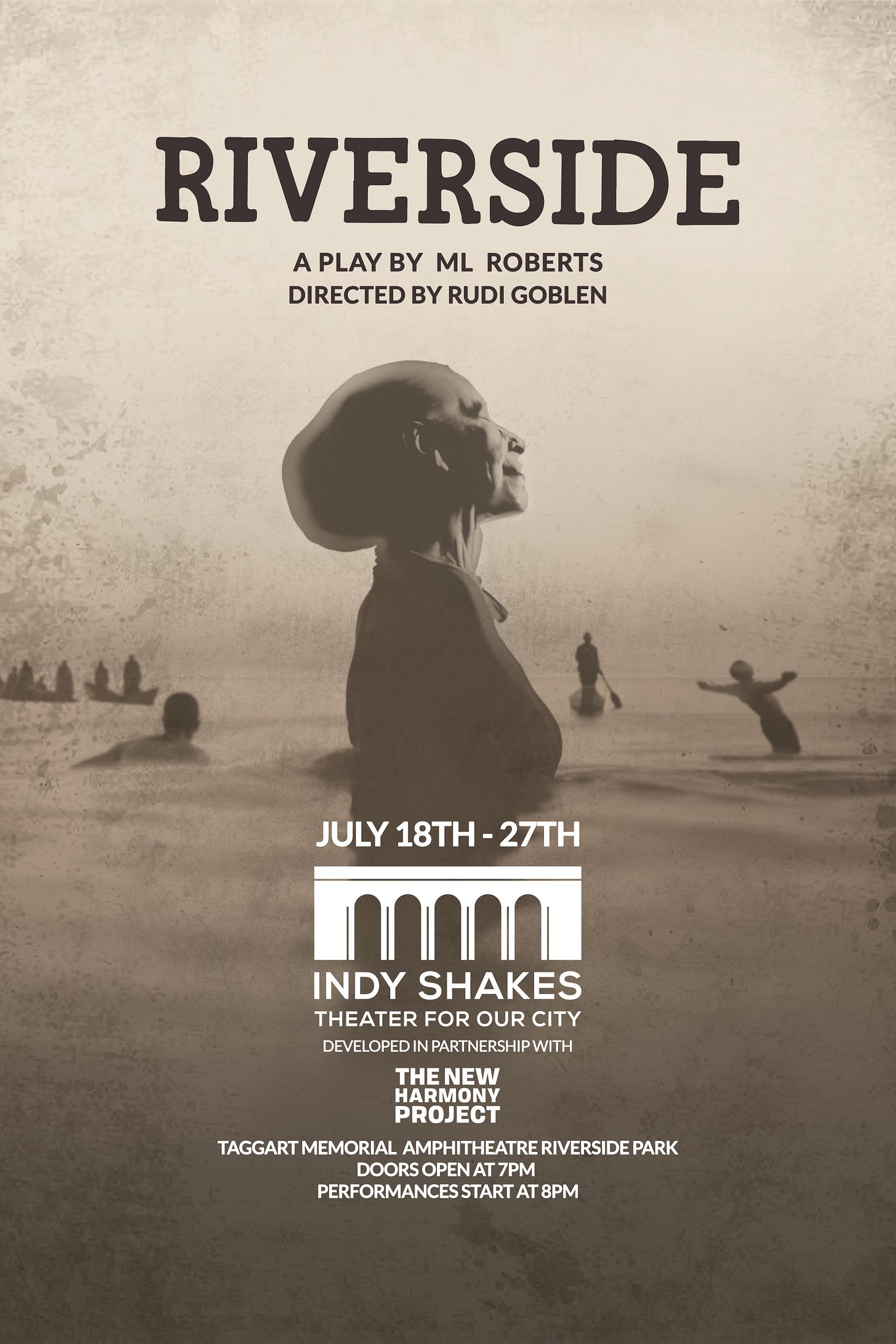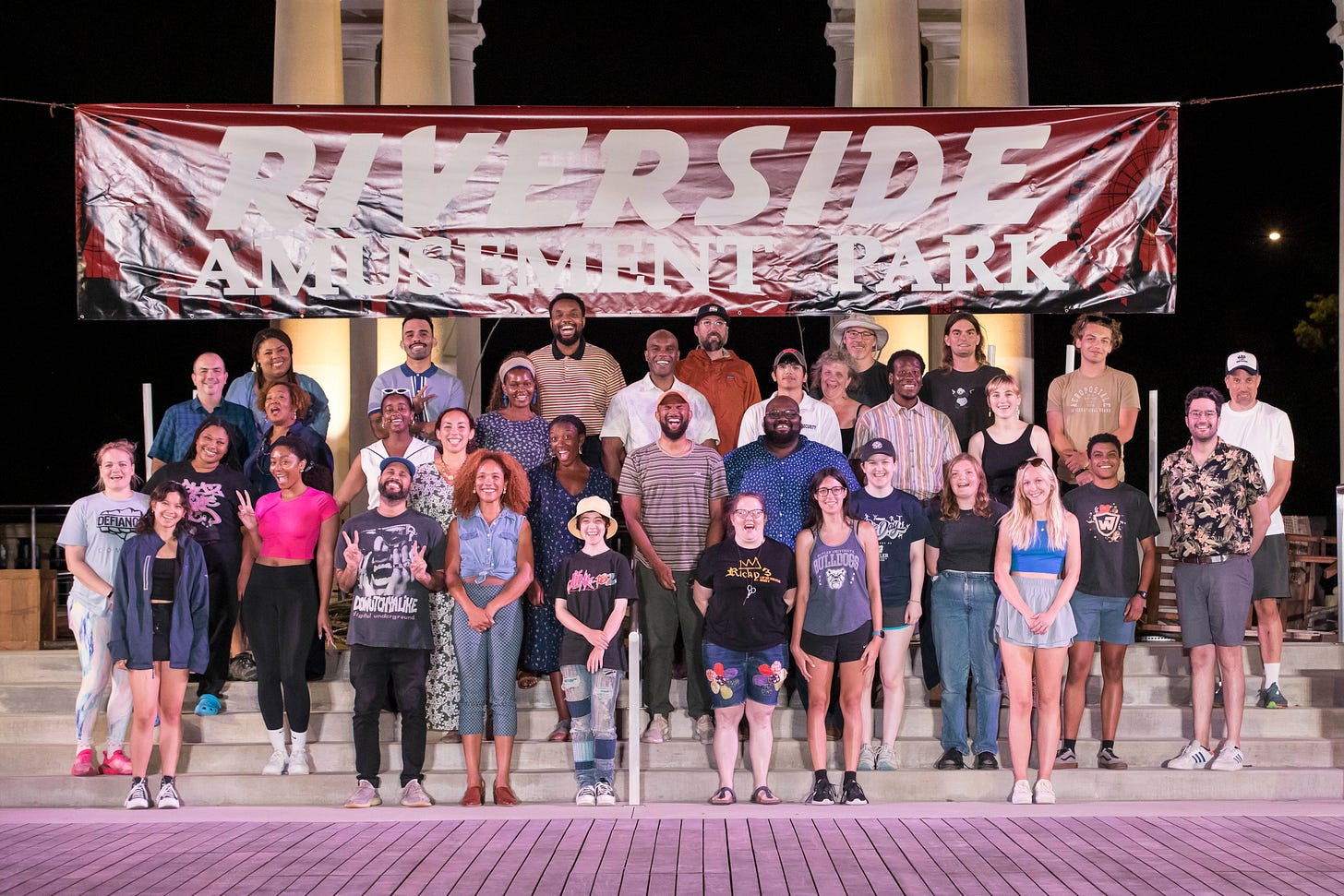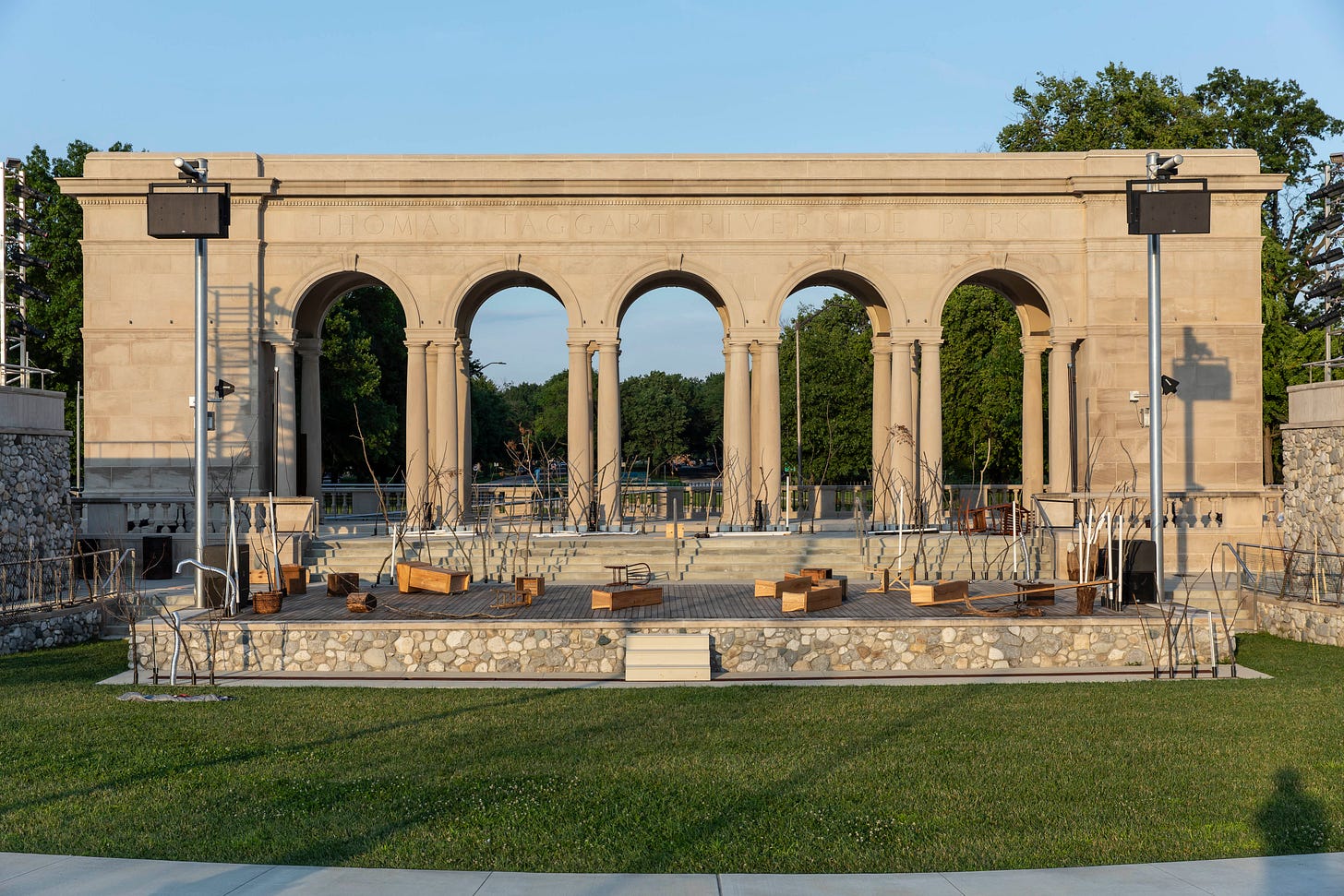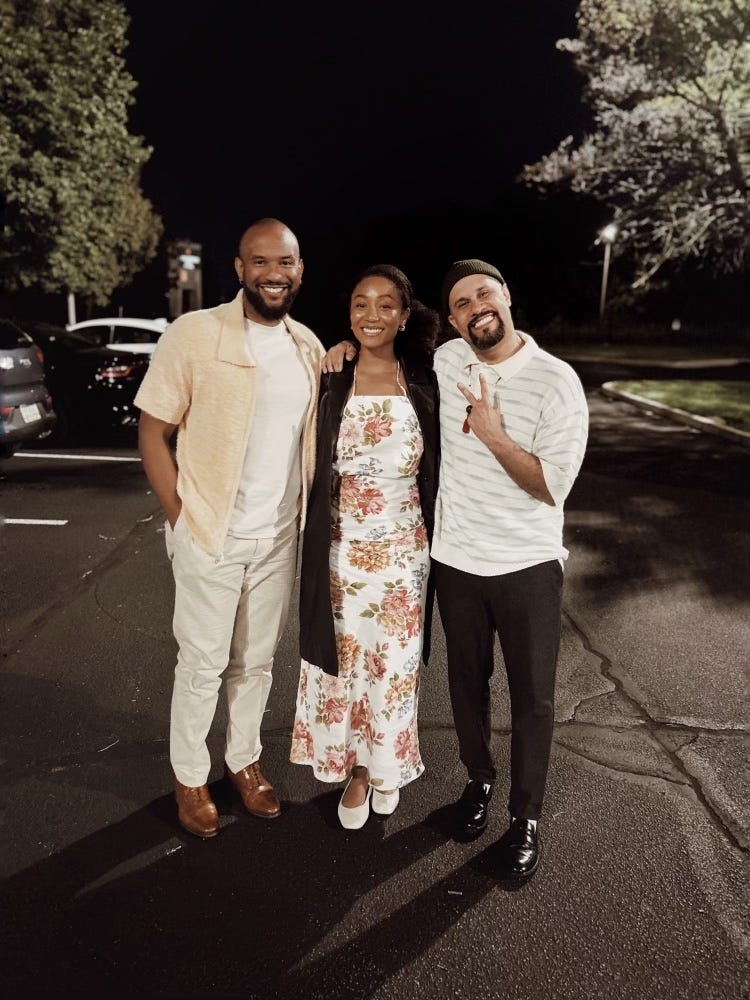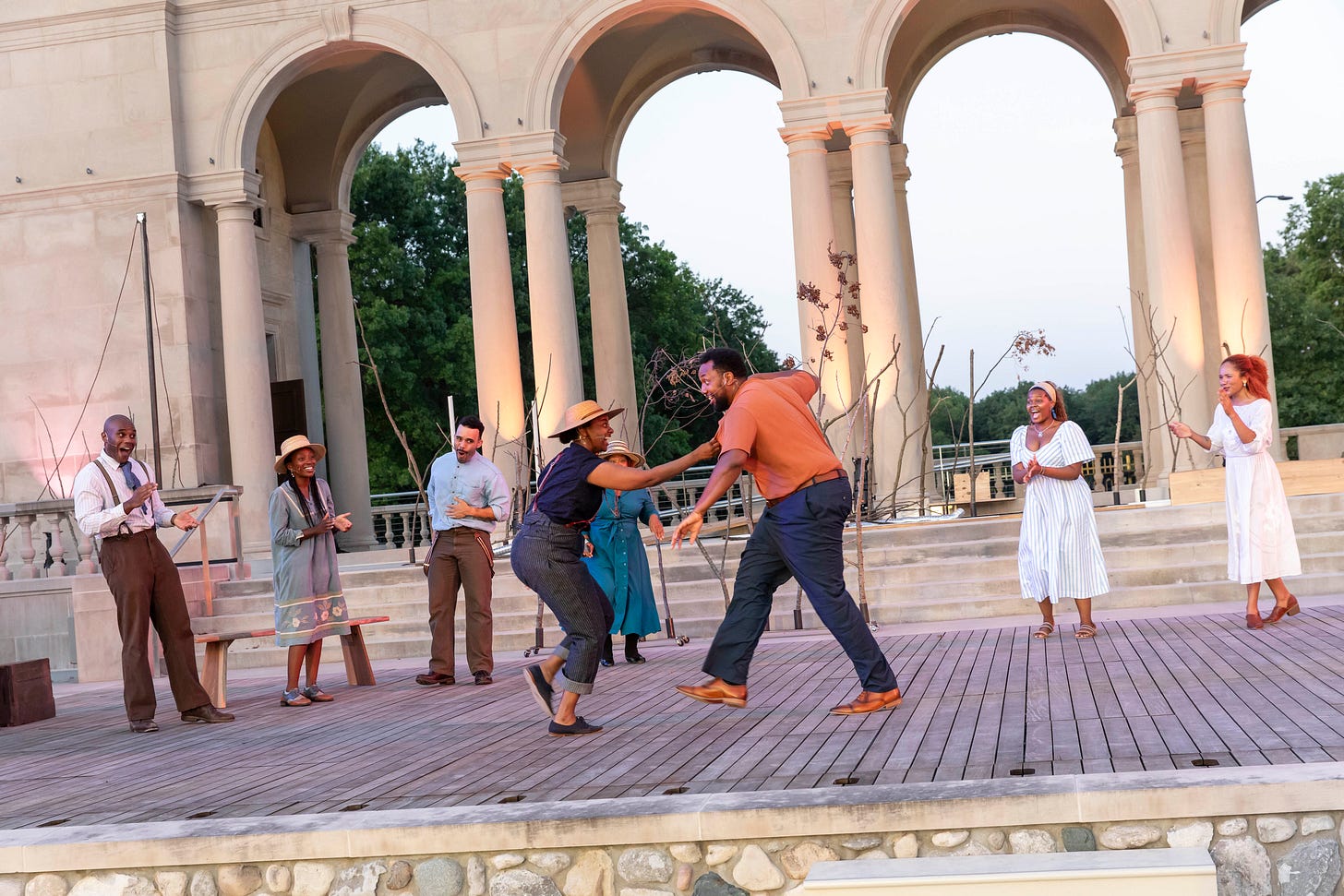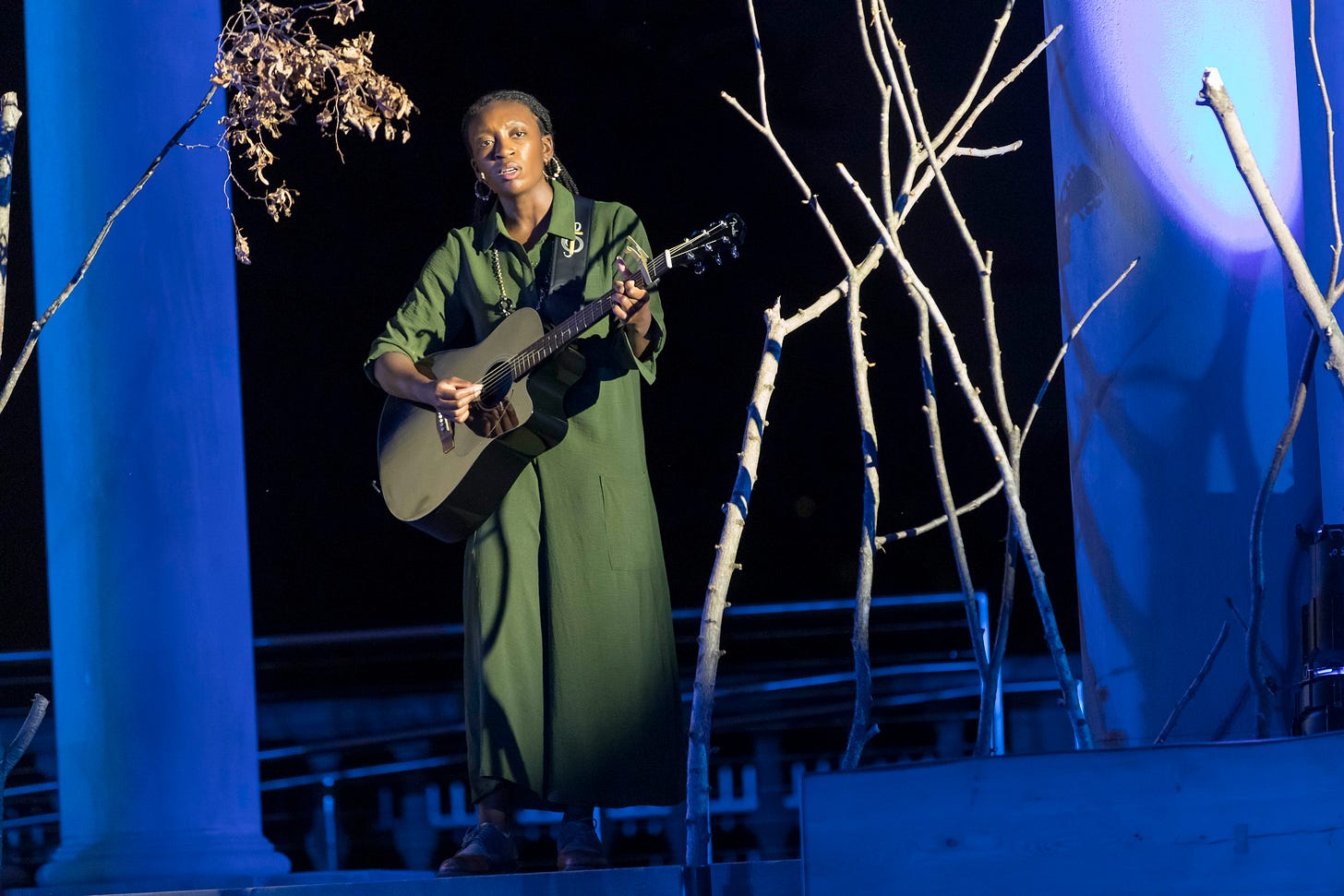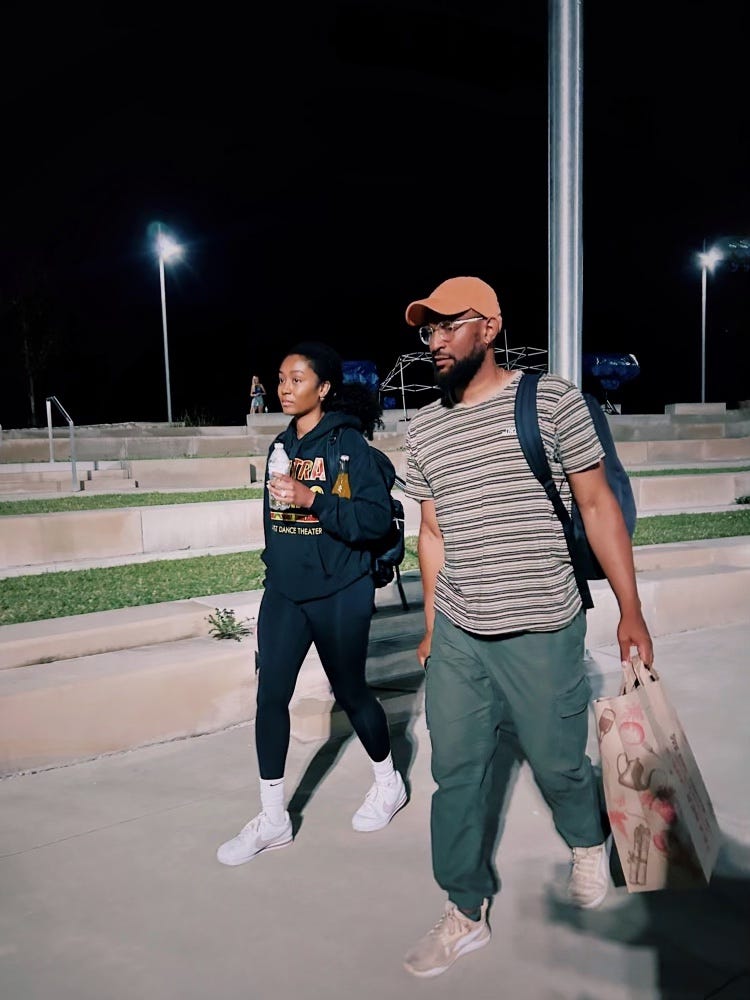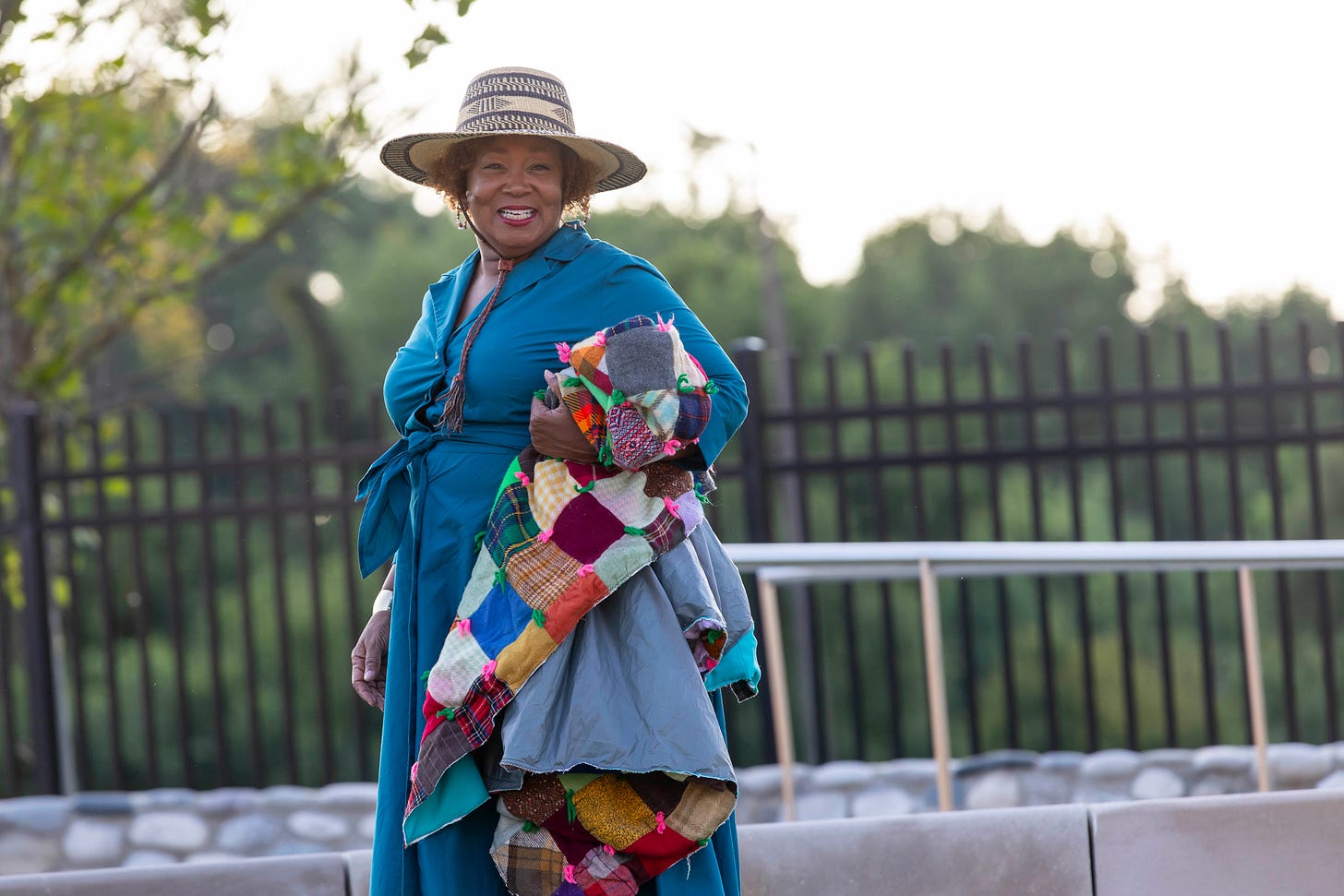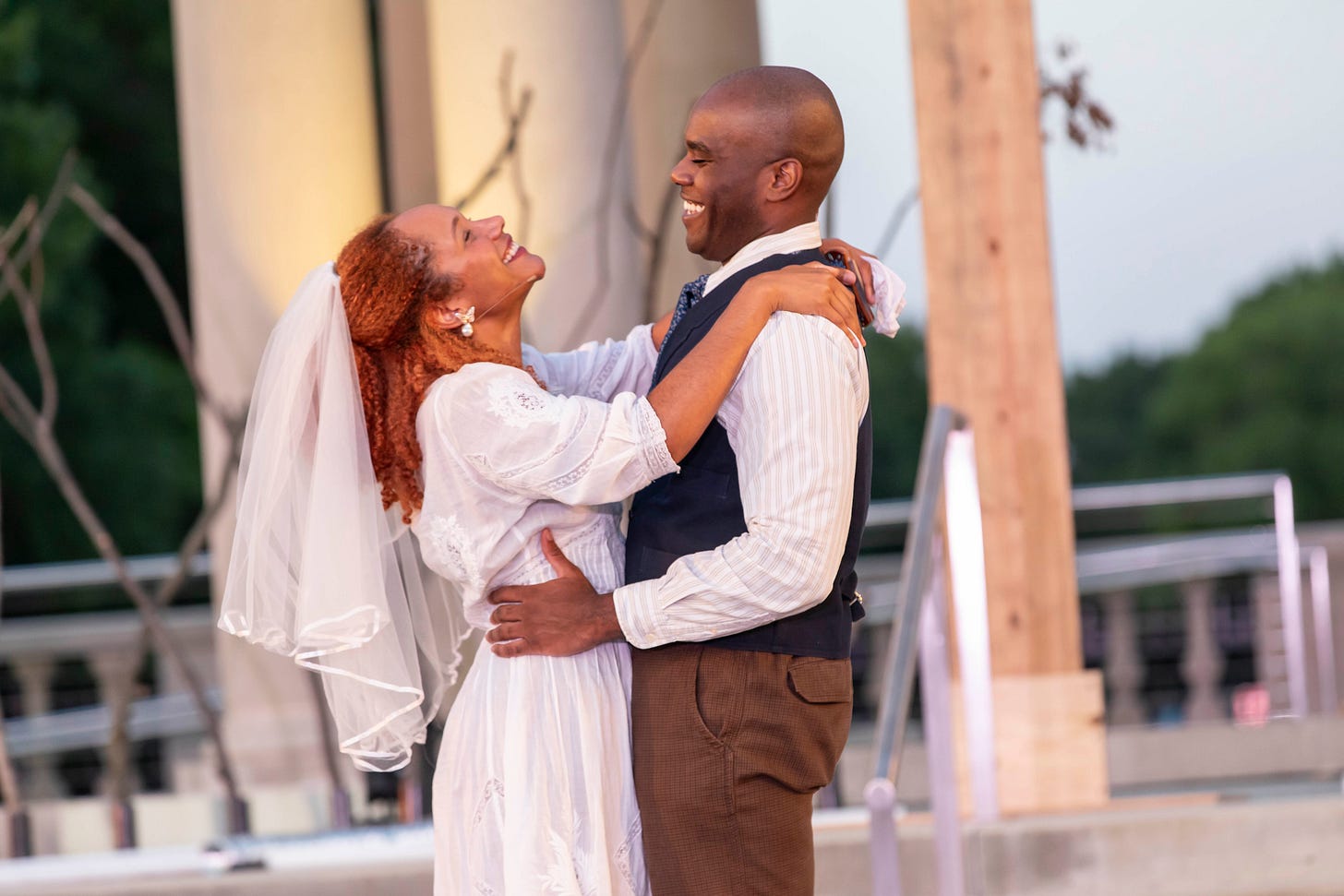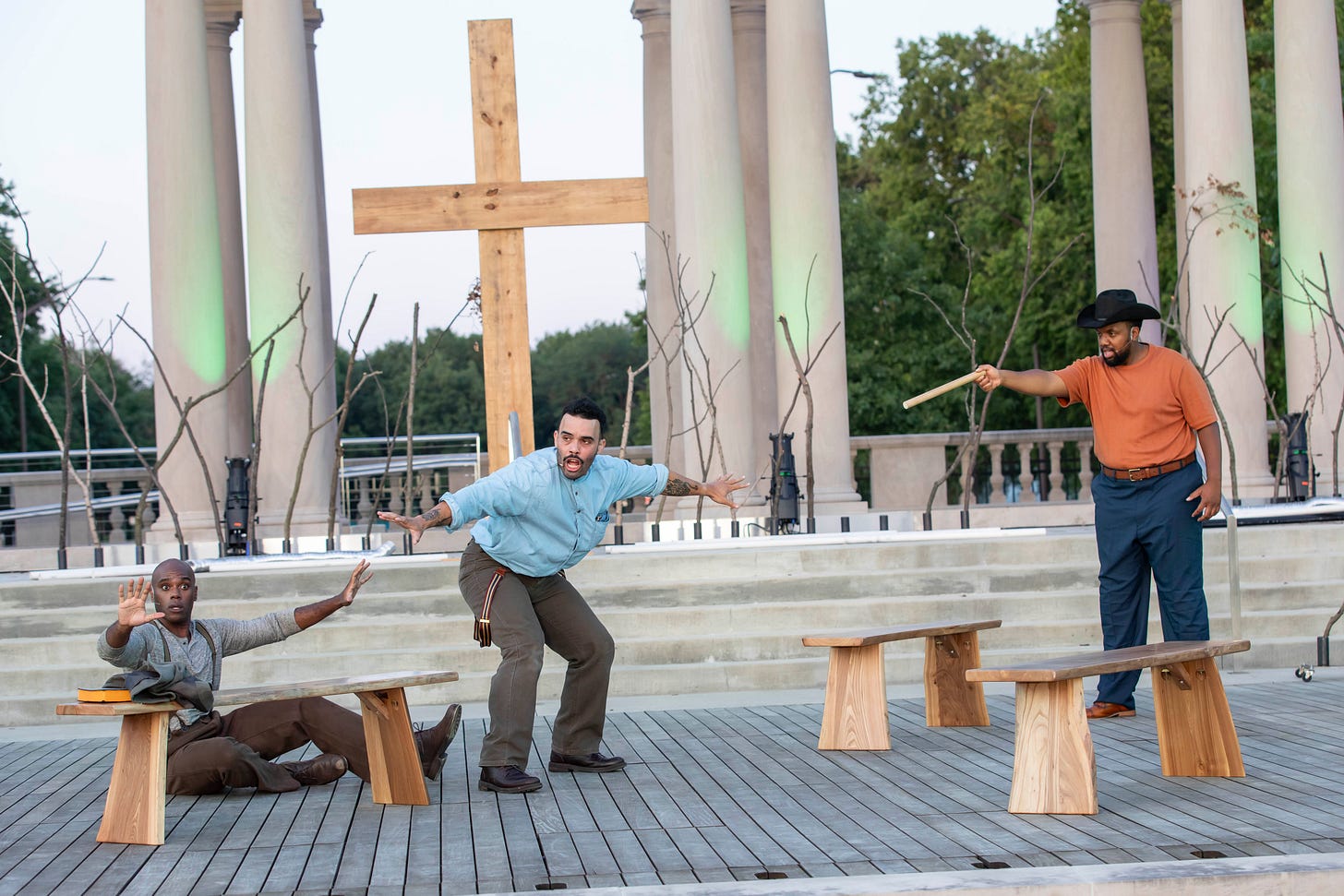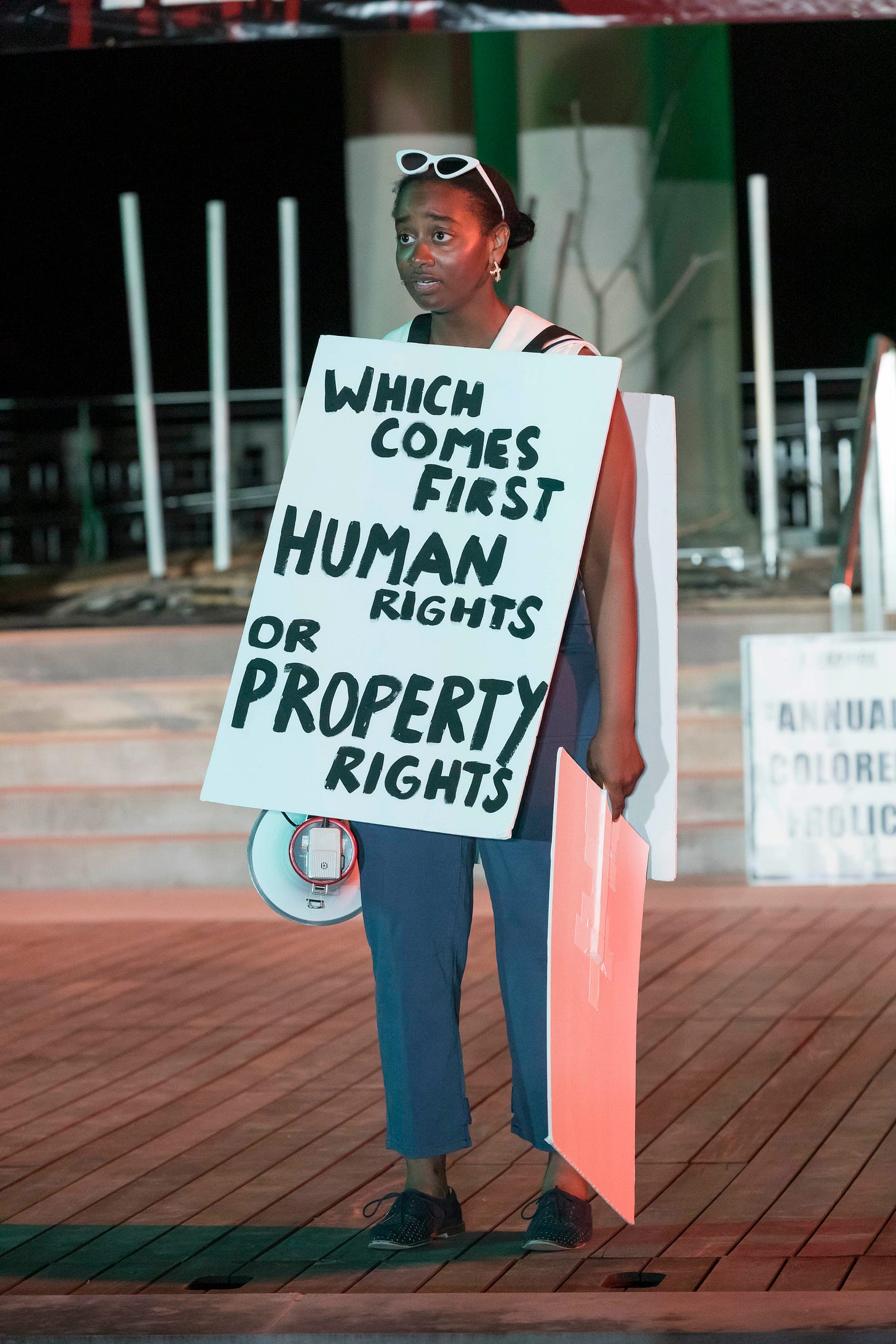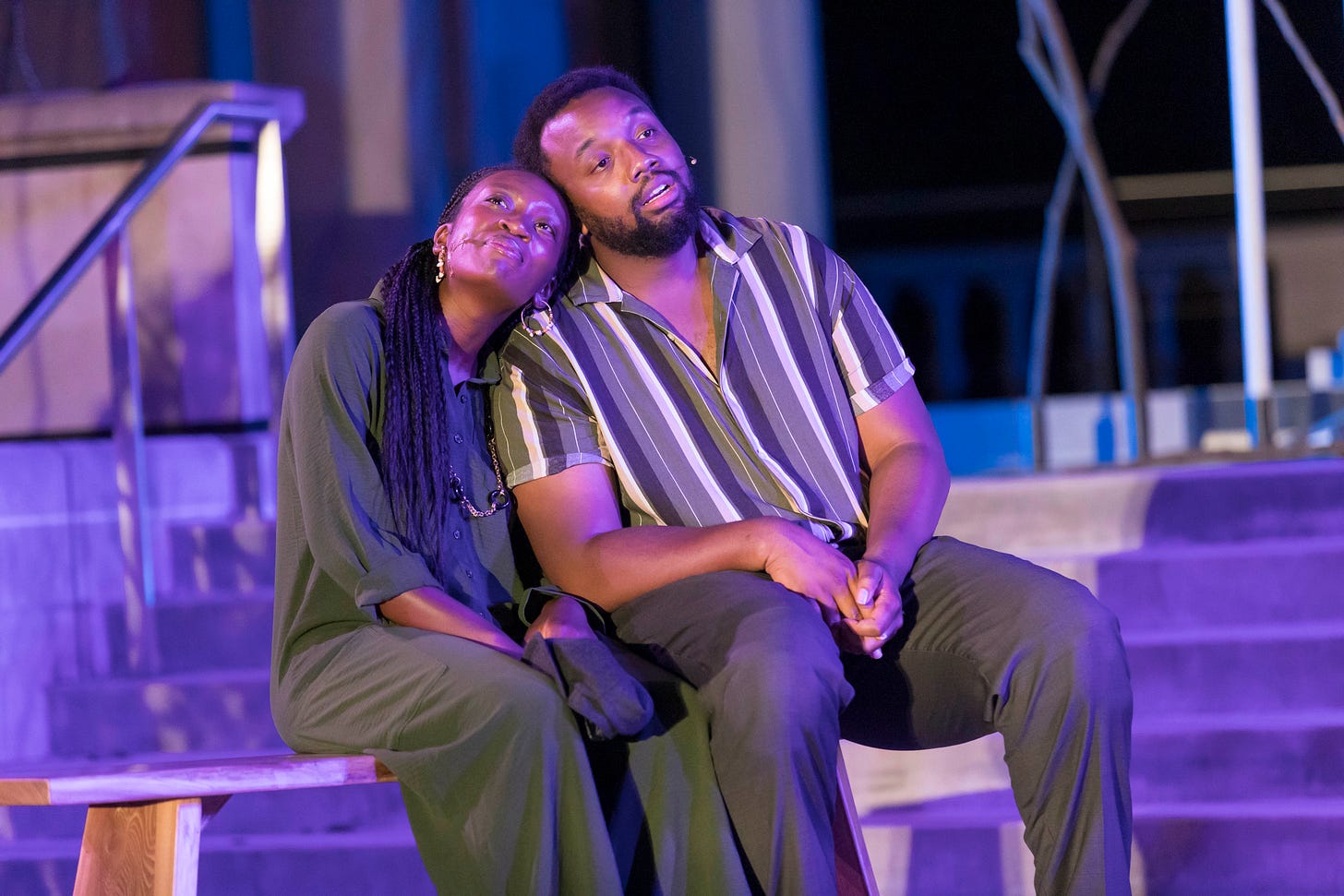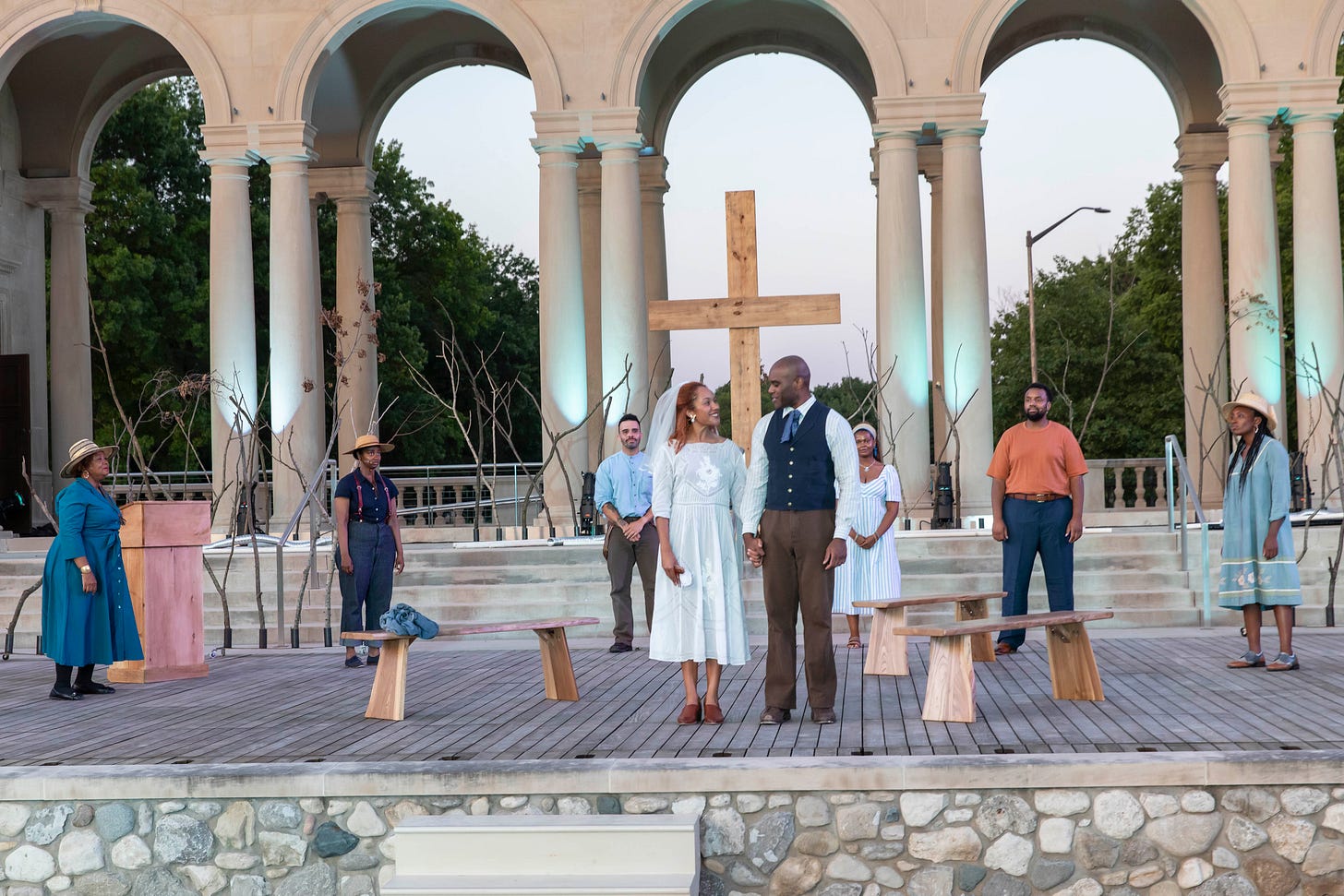Newsletter 12: Adventures in Dramaturgy—Riverside, a play by ML Roberts
When I was brought on as a dramaturg for Riverside, a play about Black displacement and survival in Indiana, I did not know what to expect. I only felt the magic of alignment. The first draft I read felt like sparkles on the page: equal parts adventure and love story, along with hints of magic. I had no idea that Indy, along with the incredible people and team I worked with, would become a place that would change my artistry for the better.
Full company. Photo by Zach Rosing.
Immediately after getting picked up from the airport by the artistic director of Indianapolis Shakespeare Company, Inc., Ryan Artzberger, I was taken on a tour of the community the play wished to serve and represent. This part of Indianapolis reminded me of summers with family in Alabama and Georgia but with noticeably more people and buildings.
The set. Photo by Zach Rosing.
Soon after, I met the playwright, ML Roberts, for the first time in person, and the director, Rudi Goblen, a fellow Miamian creative, for the second time. We all went to Trader Joe’s to get the first round of groceries for the long journey ahead. ML, Rudi, and Ryan all shared their intentions to honor the Riverside community through the commissioning of a new play that would celebrate their Black world-making across time.
The trio! ML, me, and Rudi. Photo by Leo.
Indianapolis is a place where Madame CJ Walker’s portrait is everywhere. Born just two years after the abolition of slavery, Walker was a Black woman beauty entrepreneur, philanthropist, activist, and self-made millionaire. During the early 20th century, she moved her headquarters to Indianapolis and proceeded to have a history-making impact across cultural, economic, and civic sectors in the city. Seeing the numerous public murals honoring this Black entrepreneurial legacy, I appreciated how the city acknowledges and celebrates its history.
Interlude: Black joy on the Ave. Photo by Zach Rosing.
However, through reading the play’s rich archival resources, I learned that the state’s foundation as a “free state” within the U.S. would create the conditions of battleground geography for Black place-makers seeking to migrate from the South. The condition of creating a cultural endowment within a “free state” did not mean that the condition of Black freedom was not costly. There was still a price to pay within the national currency of anti-Blackness—predatory indentured servitude, “urban renewal,” and the significant political power of the Ku Klux Klan (KKK).
Akili Ni Mali as Lenore Johnson. Photo by Zach Rosing.
ML Roberts beautifully weaves the history of Black prosperity and freedom-making in the midst of white supremacist disenfranchisement. The directing, set design, lighting, costumes, and soundscapes created a whimsical and otherworldly display of what Rudi Goblen called a “mansion of memories” that the actors activated through song, dance, movement, and stellar performances.
About “midnight-thirty” during tech week. Me and ML. Photo by Rudi.
The dramaturgical note reads:
Riverside is a play seeped in reverence and memory. Each act is rooted in a distinct moment in time, chronicling the familial bond of a resilient Black matrilineal line. The ensemble cast of eight transforms into a multitude of characters with clear desires for love and abundance, fighting against malevolent forces. Their most important role, however, is the White River, embodying how water remembers our ancestors.
Milicent Wright as a “remember-er.” Photo by Zach Rosing.
Beginning in the autumn of 1821, the play interrogates how the river bears witness to the freedom struggle of Indiana’s first Black settlers. The second act accelerates to the cultural renaissance of the 1920s and the racial terrorism that accompanied liberatory Black aesthetics. The river then flows to the 1960s in act three, colliding into the ghost of the segregated Riverside Amusement Park. This play is an odyssey dedicated to the past and the future of the Riverside community.
Kayla Carter and Malik James as Sarah and Jacob. Photo by Zach Rosing.
When Ryan Artzberger first approached him to write Riverside, playwright ML Roberts was very hesitant. Who was he, a stranger in this community, to write a play about its inhabitants? But his feelings shifted when he remembered Riverside’s loving embrace after playing Hamlet in 2019. As ML began the process of researching the rich history of Riverside and Naptown at large and spoke to people who have called Riverside home for decades, he began to hear familiar resonances that mirrored the history of his own community.
Malik James, Ed Gonzalez Moreno, and Holiday as Jacob, Pastor, and Vanderburgh.
He believes, “Whether you are from Riverside or not, this is the history of our ancestors. Stories of resilience in the face of impossible odds, of love transcending bloodlines, of the will to live peacefully in community. Somehow through pollution of all kinds, the River finds a way to run. It would be impossible, and foolish, to encompass the entire history of Riverside in one play. But my hope is that we have honored their lives, captured an essence, and reflected back the pain and beauty of this neighborhood in a way that brings pride, respect, and understanding to all who walk here. So that many more plays are written exploring all the stories here not yet told.”
Terra Chaney as Joy. Photo by Zach Rosing.
Director Rudi Goblen recognizes the special gift ML has given to all of us by writing Riverside. Goblen remarked, “This work is communal, universal, comical, tragic, and full of love: the story and the teller. It is an American history lesson about Black life in Indianapolis and a reminder of the importance of embracing and engaging in archival practices within black and brown communities. I am honored to be part of what I believe to be just the beginning of this play's long life, and grateful to have created a rehearsal room full of play, freedom, and joy alongside him and the cast during our process. The sum of that process shines boldly, seeps through cracks, and ripples the grass at the Taggart. So soak it all in, and re-member, you too, are the river.”
Olamide Asanpaola as First Lady. Photo by Zach Rosing.
Remember the love, sorrow, triumph, hope, dreams, and laughter of those who came before us. Remember that we are now the carriers of the baton they have passed on. Remember that Riverside lives and breathes, eternally and unceasingly.
Akili Ni Mali and Holiday as Lenore and Charlie. Photo by Zach Rosing.
The play was a dream and the people were magnificent!
The wedding! Photo by Zach Rosing.
If you are interested in checking out this work— here is the livestream link for tonight's ASL interpreted performance at 8pm EST/ 5pm PST! I will certainly be in attendance!
Opening night bow! Photo by me.
Art I Can’t Stop Thinking About:
The Underground Railroad created and directed by Barry Jenkins! This television series was a north star to the aesthetic and philosophical universe of Riverside. It is absolutely, in the words of ML, a “masterpiece.”




